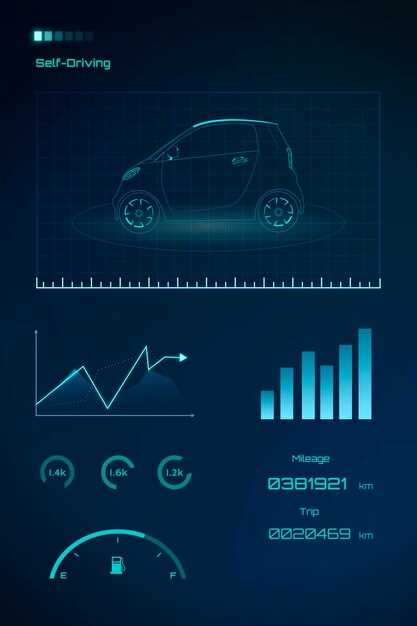
As we approach 2025, the landscape of the trucking industry is set to undergo a monumental transformation driven by innovative technologies. These advancements are not merely enhancements; they represent a fundamental shift in how goods are transported and managed. Autonomous systems, electric powertrains, and advanced telematics are at the forefront of this evolution, promising to reshape logistics and transportation safety considerably.
One of the most significant trends is the rise of autonomous trucks. Companies are investing heavily in research and development to create vehicles capable of navigating complex routes without human intervention. This innovation seeks to enhance efficiency, reduce labor costs, and minimize human error, which contributes to a safer driving environment. Additionally, regulatory bodies are beginning to formulate frameworks to support the integration of these smart vehicles into existing traffic systems.
Moreover, the shift towards electric vehicles in the trucking industry cannot be overlooked. With growing concerns about environmental impact and fuel costs, manufacturers are racing to produce electric trucks that offer longer ranges and faster charging times. This shift not only aims to lower emissions but also to provide cost-effective solutions for long-haul trucking operations. As battery technology advances, the dream of a sustainable trucking fleet is becoming a reality.
Finally, the incorporation of advanced telematics and data analytics is revolutionizing fleet management. By harnessing the power of big data, companies can optimize routes, monitor vehicle performance, and anticipate maintenance needs. This level of insight allows for improved decision-making and can significantly reduce operational costs, making fleets more competitive in an increasingly challenging market.
In summary, the innovations slated for 2025 in truck technology promise a more efficient, safe, and environmentally friendly future. As these technologies continue to evolve, they will not only redefine trucking itself but also have far-reaching implications for global trade and economic growth.
Electric Powertrains: Benefits and Challenges for Fleet Operators
Electric powertrains are rapidly transforming the trucking industry, offering compelling benefits for fleet operators. One of the primary advantages is the significant reduction in operational costs. Electric vehicles (EVs) typically have lower fuel expenses compared to diesel counterparts, as electricity is often cheaper than diesel fuel. Additionally, maintenance costs are generally lower due to fewer moving parts and the absence of oil changes and complex exhaust systems.
Environmental sustainability is another critical advantage. Electric trucks produce zero tailpipe emissions, contributing to improved air quality and helping companies meet sustainability goals. As regulations around emissions tighten, adopting electric powertrains positions fleet operators as environmentally responsible, appealing to eco-conscious consumers.
However, transitioning to electric powertrains presents challenges. One significant hurdle is the range anxiety associated with electric vehicles. Many fleets require long-distance travel, and current electric trucks may not yet offer the range necessary for certain operations. Additionally, charging infrastructure needs to be robust and strategically located to support extensive fleet operations. Without sufficient charging stations, downtime for recharging can hinder efficiency.
Another challenge is the initial investment cost. While long-term savings are expected, the upfront price of electric trucks and necessary charging equipment can be substantial. Fleet operators must weigh the costs against potential savings to determine the feasibility of transitioning their fleets.
Training and adaptation are also crucial factors. Operators must familiarize themselves with new technologies, including software and maintenance protocols specific to electric vehicles. This necessitates time and resources dedicated to ensuring that all personnel are adequately equipped to handle the changes.
In summary, electric powertrains offer fleet operators numerous benefits, including cost savings and sustainability. However, challenges such as range anxiety, initial investment, and the need for training must be addressed to fully realize the potential of electric trucks in the logistics sector. Careful planning and investment in infrastructure and training will be essential for a successful transition to electric powertrains by 2025.
Autonomous Driving Systems: Safety Features and Integration with Logistics

Autonomous driving systems are set to revolutionize the transportation and logistics industries by enhancing safety, efficiency, and reliability. These systems utilize advanced algorithms, sensors, and artificial intelligence to navigate and operate vehicles without human intervention. One of the primary focuses of these technologies is to improve safety features that mitigate risks associated with road transportation.
Key safety features of autonomous trucks include obstacle detection, lane-keeping assistance, adaptive cruise control, and emergency braking systems. Lidar, radar, and camera systems work in unison to provide 360-degree situational awareness, allowing trucks to detect obstacles and make real-time decisions. Additionally, vehicle-to-vehicle (V2V) and vehicle-to-infrastructure (V2I) communication enable trucks to receive critical information about road conditions and traffic, enhancing overall safety.
Integration with logistics operations is a crucial aspect of the deployment of autonomous driving systems. Autonomous trucks can streamline supply chain processes by optimizing routes based on real-time data, reducing delivery times and operational costs. By leveraging predictive analytics, logistics companies can anticipate demand fluctuations and allocate resources more effectively. This symbiotic relationship between autonomous technology and logistics frameworks maximizes the potential for just-in-time delivery models.
Moreover, the introduction of autonomous trucks requires adapting existing infrastructure to accommodate these vehicles safely. This includes dedicated lanes, smart traffic signals, and enhanced loading and unloading zones designed to facilitate seamless interaction between autonomous and human-operated vehicles. The collaborative approach between technology providers, lawmakers, and logistics companies is essential for creating a safe environment for the widespread use of autonomous trucks.
As the industry progresses towards 2025, advancements in artificial intelligence and machine learning will continue to refine safety features and improve integration with logistics. Ultimately, the successful implementation of autonomous driving systems promises to enhance road safety while revolutionizing how goods are transported, making logistics more efficient and responsive to market demands.
Telematics and Connectivity: How Data Analytics Enhance Fleet Management

Telematics and connectivity have revolutionized fleet management by leveraging data analytics to optimize operations. Through the integration of GPS, onboard diagnostics, and telematics platforms, fleet operators can access real-time information regarding vehicle locations, driver behavior, and maintenance needs. This data-driven approach leads to enhanced decision-making and operational efficiency.
One of the primary advantages of telematics is the ability to monitor vehicle performance continuously. Data analytics enables fleet managers to identify patterns and trends, such as fuel consumption, engine diagnostics, and route efficiency. By analyzing this information, companies can implement targeted strategies to reduce fuel costs and minimize wear and tear on vehicles.
Furthermore, telematics systems facilitate proactive maintenance. By predicting when a vehicle requires servicing, fleets can avoid unplanned downtime, which is often costly. Predictive analytics uses historical data to forecast potential failures, allowing operators to schedule maintenance during off-peak hours, thereby optimizing vehicle availability.
Moreover, connectivity enables enhanced driver safety and compliance. Fleet management systems can analyze driving patterns and provide feedback to drivers, promoting safe driving behaviors. By utilizing telematics data to monitor speed, braking, and acceleration, companies can reduce accident rates and lower insurance costs. In addition, real-time data collection ensures adherence to regulatory requirements, aiding in compliance and risk management.
The implementation of telematics also improves route optimization. By analyzing traffic patterns and road conditions, fleet managers can make informed decisions about routing, ultimately reducing travel time and costs. Dynamic routing algorithms adjust in real time, considering various factors such as weather and traffic, thus enhancing delivery efficiency.
In conclusion, the integration of telematics and connectivity into fleet management represents a significant advancement in the trucking industry. By harnessing the power of data analytics, companies can achieve greater operational efficiency, improve safety, and reduce costs, setting the stage for more sustainable and effective fleet operations in 2025 and beyond.

